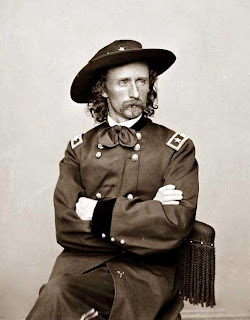
“President Obama is in Asia,” I told the class.
“Yes, and he bowed to the Japanese emperor,” said a boy.
“What’s wrong with that?”
“Americans don’t like to see their leader bow to others,” said the boy. “It’s like saying they’re better they we are.”
“He was just being polite,” said a girl. “Nothing wrong with that.”
“Okay,” I said. “Chinese leaders asked how he was going to pay for his health care reform bill, which may cost another trillion dollars. Why would Chinese leaders care about that?”
“Because China lends us money, right?” said another boy.
“Yes. Japan too. Why is that?”
“Because we don’t have enough?”
“That’s right,” I said, pulling down the screen and projecting an image onto it. “This chart goes back to 1980 and it shows how our federal government is paying, or not paying, for what it does.” I explained how we get a deficit when government spends more than it gets in taxes and showed them how the deficit increased during the Reagan and first Bush presidencies and declined during the Clinton years. Then I pointed to the surplus in the late Clinton years and the second Bush’s early years before sliding back into deficit after the September 11th attacks in 2001 and our invasions of Afghanistan and Iraq.
 “Notice that during George Bush’s last year the deficit was a record at almost $500 billion?” I said, pointing on the screen. “Now look at President Obama’s first year,” I said. He’s more than tripled the deficit to $2 trillion.”
“Notice that during George Bush’s last year the deficit was a record at almost $500 billion?” I said, pointing on the screen. “Now look at President Obama’s first year,” I said. He’s more than tripled the deficit to $2 trillion.”“Wow,” said three students.
“What can Obama and the Congress do to reduce the deficit?” I asked. “There are at least three ways.”
“Higher taxes,” said a boy.
“Right,” I said. “That’s one way, and Obama is asking Congress to raise taxes, but not nearly enough to reduce the deficit. Why not?
“Because that would make people mad,” said the boy.
“Right, and congressmen might get voted out. What else can they do?”
“Don’t spend as much,” said a girl.
“Right again,” I said, “but Obama and the Congress are spending more and the health
 care reform bill they’re trying to pass will cost another trillion dollars. What else can they do?”
No hands.
care reform bill they’re trying to pass will cost another trillion dollars. What else can they do?”
No hands.“They could print money. The Constitution gives Congress power to do that and they are,” I said. “Good idea, huh?”
“Yeah,” said a boy.
“Won’t that make our money not worth as much?” asked a girl with a worried look.
“Yes,” I said. Other students looked puzzled.
“Why is that?” asked one.
“Because then there are more dollars out in circulation while the number of things to
 buy stays the same. Each new dollar and the ones already out there are worth less. Prices go up. It’s called inflation.”
buy stays the same. Each new dollar and the ones already out there are worth less. Prices go up. It’s called inflation.”I waited while that sunk in. Then I took a dollar and a blank check from my wallet and held them up. “Notice they’re about the same size and both are made of paper?”
They nodded.
“Let’s say you were selling a house for $200,000 and I wanted to buy it, okay?
More nods.
“If I made out this check for $200,000 and signed it, would you take it in trade for your house?”
“That depends on whether you have $200,000 in your account,” said another girl.
“I claim that by writing the check. It comes down to how much you trust me.”
“I don’t know,” she said.
Then I held up the dollar. “This is like a check from the United States of America. Do you trust the United States government?”
“Yes.
“Would you take 200,000 of these?”
“Yes.”
“China is nervous about the US dollar,” I said. Then I took a quarter out of my pocket and held it up. “This used to be made of silver but now it’s copper because
 this much silver is worth more than 25 cents. Ever see an old movie where someone bites a coin?”
this much silver is worth more than 25 cents. Ever see an old movie where someone bites a coin?”Many had.
“Why?”
“Because silver is soft and they wanted to see if it was real,” said a boy.
“Right. They trusted the metal, not the country. This has little ridges around the
 outside edge because people would sometimes shave some off. With ridges, you know it’s all there.”
outside edge because people would sometimes shave some off. With ridges, you know it’s all there.”“The price of gold has doubled in three years to over $1100 an ounce because people are trusting metal more than dollars again. Two weeks ago India bought 200 tons of it.
 China is worried about the billions it already lent us. That’s why they’re asking Obama about where he’s going to get the money to pay for his health care reform bill. They’re afraid he’s going to print more dollars.”
China is worried about the billions it already lent us. That’s why they’re asking Obama about where he’s going to get the money to pay for his health care reform bill. They’re afraid he’s going to print more dollars.”




















